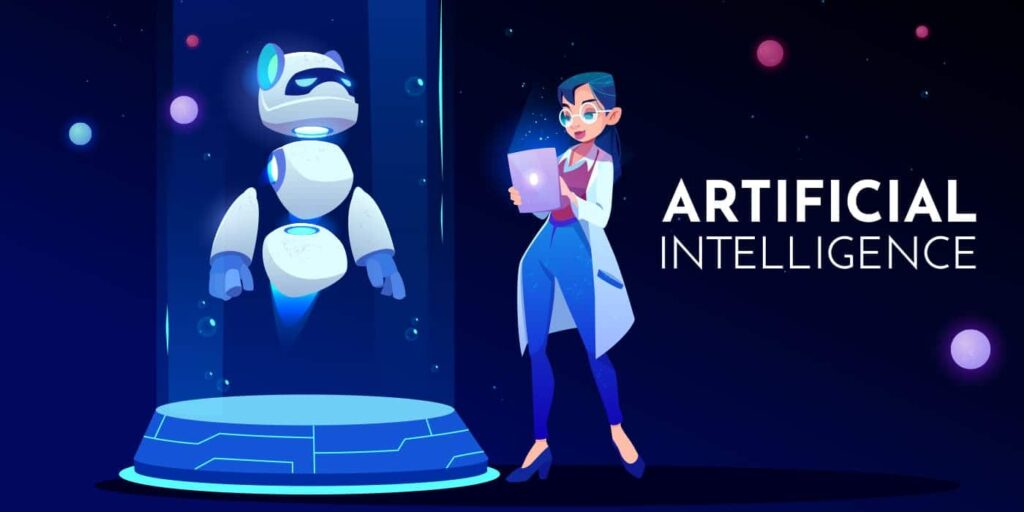There’s a lot being written and said about artificial intelligence (AI) right now. Along with other related terms such as machine learning and deep learning. Understandably, people tend to misunderstand the many terms used with AI and hence this article aims to help you differentiate and understand the various roles these capabilities can play in IT service management (ITSM) and ITIL. However, before I go into the differentiation, I should first provide some background as to what AI, machine learning, and deep learning are.
What’s AI?
As its name suggests, it’s a human-made system of intelligence. It’s the ability of a machine to work and reason like a human being.
AI works and behaves like humans because that’s the way it’s been designed. Examples of AI include Face recognition, retina-scanning, language translation services (such as The Word Point) , digital biometrics, machine learning, and deep learning. It’s increasingly now seen – or often not seen because it simply works away in the background – in our everyday lives.
This article aims to help you differentiate and understand the various roles that AI, machine learning, & deep learning can play in #ITSM. Share on XWhat’s Machine Learning?
Machine learning is a branch of AI. It’s the ability of a machine to gain knowledge from data analysis to become artificially intelligent through learning.
Machine learning involves the use of algorithms to gather data and learn. At the end of the learning stage, the machine has analyzed the data and created a model from which to make decisions or predictions. For example, you might have received a recommendation for e-commerce sites on Facebook – this is because of the data stored over time from your browsing, with Facebook’s analytics deciding that you’d be interested in a given advert.
What’s Deep Learning?
Deep learning can be either classified under both machine learning and AI (think of it as a branch of a branch). Deep learning seems to have more similarities with machine learning but with the difference being that machine learning needs some supervision while undertaking its learning tasks, while the deep learning model will carry out its task effectively even without human guidance (deep learning can be supervised, semi-supervised, or unsupervised).
The Difference Between AI, Machine Learning, and Deep Learning
Given that these terms and practices are closely related and sometimes tricky to differentiate, I believe that a practical example is the best way to describe the differences. I’ll use traffic planning in my explanation.
If you created an AI application that notifies traffic engineers and planners where the major traffic congestion points in a city are, then this can help them to make plans for road maintenance, traffic lights, and other factors that will reduce the rate of traffic congestion in the city.
What's the difference between AI, machine learning, and deep learning? This article explores. #AI #machinelearning Share on XThen if you take the second step of programming the AI to search and identify certain patterns within the data. For instance, it identifies that traffic in some sections of the city is problem-free between 2-4 pm, and congested in the evening (probably because of rush hour overlapping with a football match). The model created from the data will give more insight and thus help the planners and the engineers to make plans to avoid traffic jams during days of football matches. This is the application of machine learning.
Deep learning is then the point where the data analysis goes beyond the simple reading of raw data and recognizing data patterns. It uses multiple layers to progressively gain greater insights from the data, which can be done in an unsupervised manner.
Why We Need to Differentiate Between AI Types
The ability to categorize the differences between AI, machine learning, and deep learning is crucial because it helps in organizing not only the different levels and abilities of AI automation solutions but also the business perspectives that can be gotten from it.
For instance, using the traffic example again, if a city plans to undertake a comprehensive analysis of their roads next year to find out where there are the most traffic jams and the roads that need maintenance too. In the second year, the town will have the ability to forecast traffic jams during rush hours and other special occasions. They’ll then be able to inform commuters of the hotspots and provide alternative routes for them. By the third year, the city will have enough insight to make plans for the future by taking a look at the population and growth in traffic, infrastructure maintenance shutdowns, and also know how other factors such as climate change affect them.
The city’s technology adoption roadmap will, of course, impact the ability to execute these strategies, needing to factor in the types of AI technologies required.
If you have a better example to help demonstrate the difference between AI, machine learning, and deep learning, then please let me know in the comments.


One Response
It very clearly differentiate between AI, Machine learning and Deep learning. What a wonderful article in such simple and short words. Those points which you have mentioned in this article are very useful. Thanks for sharing this with us.